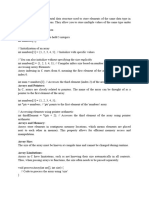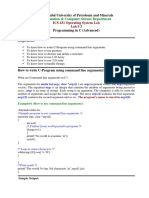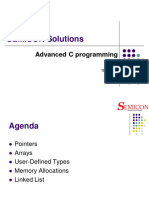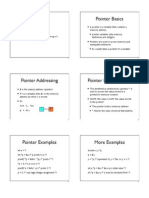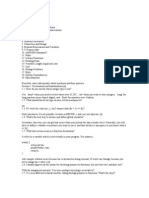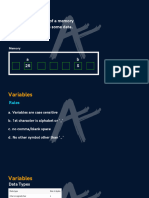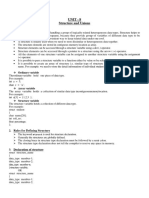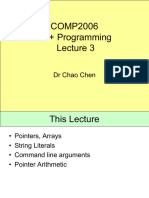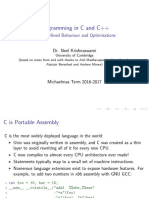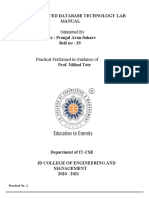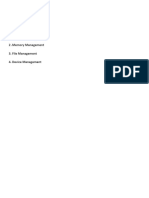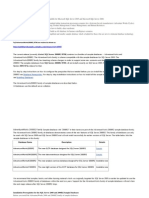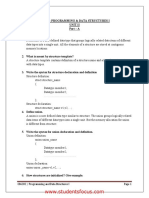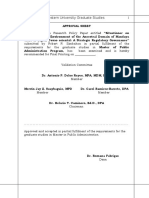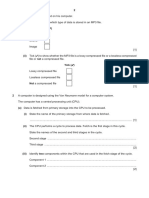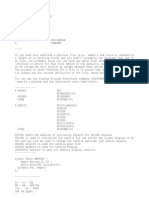0% found this document useful (0 votes)
80 views25 pagesProgramming in C and C++
This document provides an overview of pointers and structures in C and C++. It discusses how pointers store memory addresses and can be used to manipulate variables and arrays. Structures allow grouping related data and can contain other structures. Pointers to functions allow functions to be passed as arguments. Multi-dimensional arrays and arrays of pointers are also covered. The void pointer type is discussed as a generic pointer type.
Uploaded by
John PinchosCopyright
© © All Rights Reserved
We take content rights seriously. If you suspect this is your content, claim it here.
Available Formats
Download as PDF, TXT or read online on Scribd
0% found this document useful (0 votes)
80 views25 pagesProgramming in C and C++
This document provides an overview of pointers and structures in C and C++. It discusses how pointers store memory addresses and can be used to manipulate variables and arrays. Structures allow grouping related data and can contain other structures. Pointers to functions allow functions to be passed as arguments. Multi-dimensional arrays and arrays of pointers are also covered. The void pointer type is discussed as a generic pointer type.
Uploaded by
John PinchosCopyright
© © All Rights Reserved
We take content rights seriously. If you suspect this is your content, claim it here.
Available Formats
Download as PDF, TXT or read online on Scribd
/ 25









